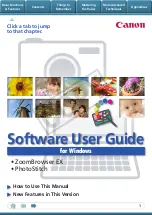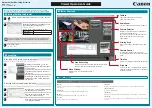
463
Engl
ish
5.
The third synthesizer can respond to 16 MIDI channels, but the only channels left are 9 and 11
through 16. Enter these numbers in the corresponding tracks. You will need to mute the unused
channels on the third synthesizer (1 through 8 and 10) so they won’t play. These are assigned to the
drum machine and the second synthesizer.
6.
Name each track and set any track parameters, such as starting patch, volumes, panning, reverb,
chorus, and transposition.
7.
If you like, configure other parameters needed in your projects, such as auto-send Sysx banks,
tempo settings, window positions, and comments.
8.
Choose
File-Save
, and save the file as a template named
MY
3
SYNTHS
.
Now, each time you want to start working on a new project, you can simply load your template and start
recording.
Key Bindings
Key bindings let you associate SONAR commands with keys on both your MIDI keyboard and your
computer keyboard. This makes it easy for you to access specific features more quickly and efficiently.
In addition, SONAR supports:
•
Importing key bindings from other popular sequencer programs (see “Importing Key Bindings” on
page 465)
•
Exporting key bindings from SONAR (see “Exporting Key Bindings” on page 465)
•
Use of any single key as a key binding (number keys on the number pad are separate keys from the
other number keys)
•
Changing the key bindings for commands that were previously hardwired, including hotkey
commands in the various views
Note
: The Spacebar is now “globally” bound to the Play/stop button, so that when you have a plug-in
window open, you can still start and stop playback with the Spacebar.
Any one or two of the Ctrl, Alt, and Shift keys can be used in combination with other keys. Preset key
combinations appear in bold, with the command that they’re currently assigned to listed at the bottom
of the Key Bindings dialog.
Rather than tie up all the notes on your MIDI keyboard with key bindings, SONAR lets you define a key
binding shift key on your MIDI keyboard that indicates when you want to use a key binding. For
example, you could designate the lowest note on your MIDI keyboard as the key binding shift key, and
then assign different notes to specific commands (for example, C4 to
Process-Quantize
, C5 to
Process-
Groove Quantize
, and so on). If you press the C4 key by itself, the note plays normally. If you press the
C4 key in combination with the lowest key on your keyboard (the key binding shift key), then it’s just as
if you had chosen the
Process-Quantize
command from the menu.
Summary of Contents for Cakewalk SONAR
Page 1: ...Cakewalk SONAR User s Guide ...
Page 2: ......
Page 4: ......
Page 22: ...xxii ...
Page 50: ...50 ...
Page 102: ...102 ...
Page 182: ...182 ...
Page 302: ...302 ...
Page 420: ...420 English ...
Page 466: ...466 ...
Page 502: ...502 ...
Page 574: ...574 ...
Page 580: ...580 ...
Page 608: ...608 ...
















































